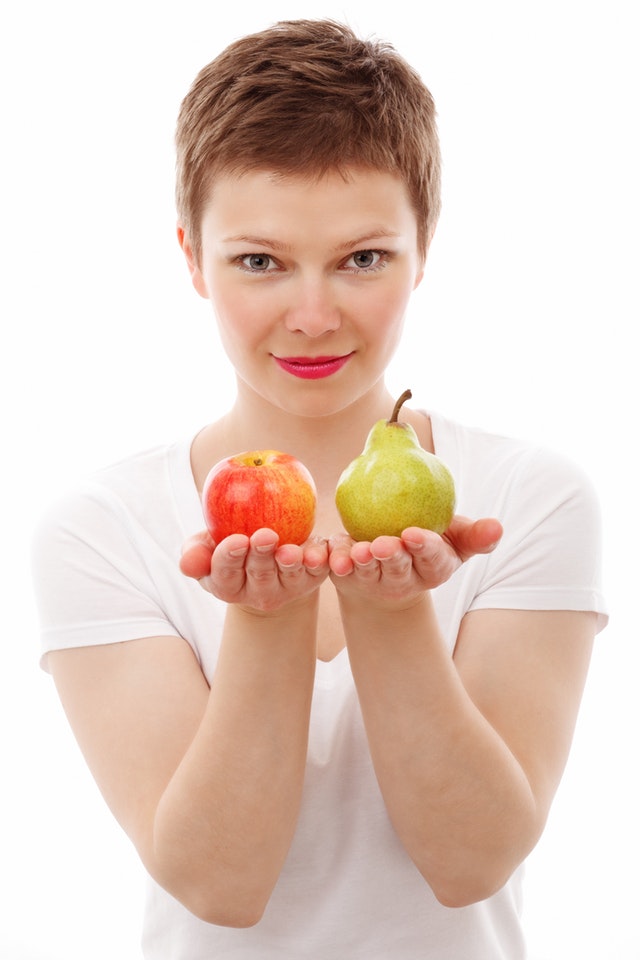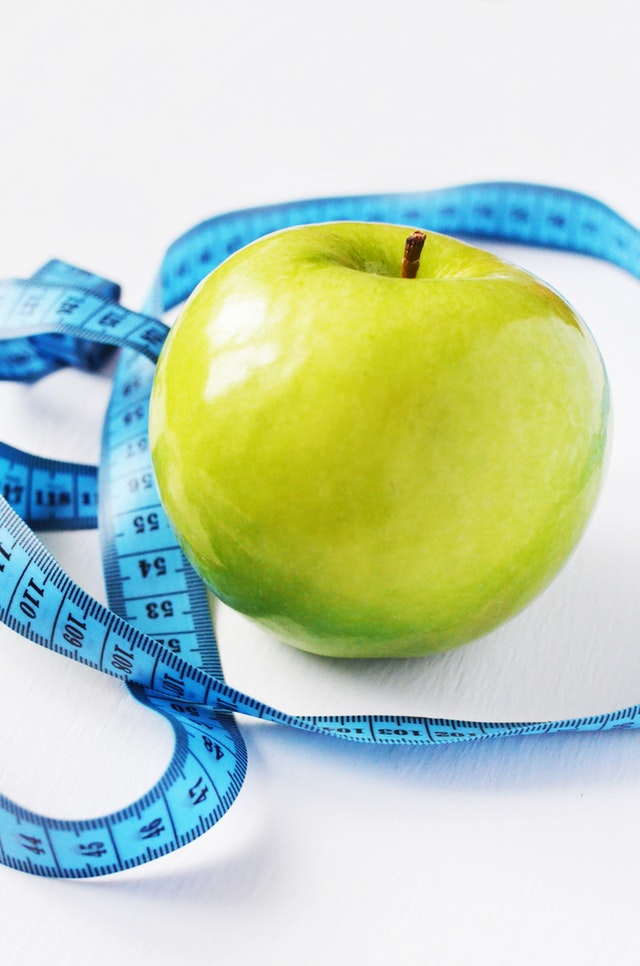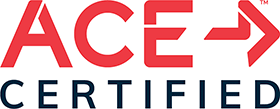Why Your Waist Says More about You Than Your Weight (or even Your BMI)
By Dr. Robert Curtis
(Doctor of Chiropractic, Certified Medical Examiner (U.S. Dept. of Transportation), A.C.E. Certified Health Coach and Fitness Nutrition Specialist)
Last reviewed / slightly edited: 10/13/21
Time crunch? Save this page for later with Pocket, Instapaper, or Evernote.
Body weight is an interesting concept.
Culturally, we're more or less conditioned to use it as a reference for everything from muscle gain to whether or not we've gone through the flu unharmed.
And what's our preferred tool for measuring body weight? The scale, of course.
But does the scale and your weight really say that much about you?
And what about a more common measure of today for assessing body composition, your Body Mass Index, your BMI?
Your BMI (your weight divided by your height) can be a bit more telling than just weight alone but it doesn't account for how much of your weight is fat or muscle, nor where it's located on your body, and that's important to know.
So, to get more specific ...
We get more information out of looking at our individual waists.
In particular, the circumference of the waist (the grabbable part, and what's hidden beneath).
To illustrate this a bit ...
We humans seem to love symbolism – like the mind being an onion with layer upon layer, with the same going for the body, describing it as either an "apple" or a "pear".
The idea being that an apple shaped body is wide around the belly, while a pear shaped body is wide around the thighs or hips.
So what is it supposed to mean?
Apple? Pear?...
 Do you tend to be apple shaped or pear shaped? (image source at end of article)
Do you tend to be apple shaped or pear shaped? (image source at end of article)Let's focus on this for a minute...
Body shape and general health correlates to a high degree.
That means that the shape of your body might predict whether or not you're at risk of developing problems such as high blood pressure, diabetes, and issues relating to high cholesterol like heart disease and other common vascular related diseases such as in your kidneys, or a health crisis incident, like a stroke or heart attack.
Which body shape is the most problematic? Bluntly? The apple. [1]
Also, often referred to as a spare tire, muffin top, beer belly, and the ever affectionate love handles.
To keep it healthier oriented though, we'll continue to refer to it as the apple.
So, when we're talking about the apple, we're not necessarily just talking about the visible fat that we just referred to. That's just the subcutaneous fat, or the tip of the iceberg. The indicator. A sign that things have gone too far.
Most health issues arise though due to the fat we can't see, or the visceral fat, which builds up around our internal organs such as the liver and our intestines.
It's fat you can't see or touch.
Excessive fat can release added compounds contributing to systemic inflammation, and things that affect everything from blood sugar to the body's metabolic rate.
People with an apple shaped body generally have much more of this visceral fat when compared to the pear shaped people.
Also, men fare a bit worse here, as they tend to deposit fat around their bellies throughout their lives whereas women less so, before menopause, going mainly on the hips first, but afterwards, belly fat builds up more readily in women, as well.
To sum this up, the somewhat counterintuitive fact is that it's not about how much you weigh...
It's more about where the fat is located.
Waist-ing time ...
 A tape measure to determine if you're more like an apple or a pear. (image source at end of article)
A tape measure to determine if you're more like an apple or a pear. (image source at end of article)How do I tell my body shape, or just if my risk is elevated?
Am I an apple or a pear?
There are no secrets when it comes to assessing this – your waist circumference that is – the key measure.
You just need a measuring tape.
In simple terms, get this measurement by measuring the fattest area around your waist. Generally at the level of your belly button. Often at a point between the top of your highest hip bone (the top of your pelvic bone that you may feel a bit below your lowest ribs, on the side) and your lowest ribs, on the side.
If you're a woman...
A waist measuring more than 35” would put you at risk of not only abdominal obesity, but also vascular, including cardiovascular, and metabolic, disease.
This does not apply to those of you who are pregnant, of course, that's a necessary weight gain time.
For men, a waist measuring more than 40” would put you at risk.
There are some differences among ethnicities though, Asians, generally, have lower waist circumference measurements, so to get a deeper assessment consider the following measures to go a bit further. [2]
One assessment measure would be to see if your waist measurement is half or less than the measurement of your height, with half or less being good. [3]
Another good risk predictor is to check your waist to hip ratio. [4]
For this, take your waist measurement, and then measure your hip circumference, the widest part of your hips, near the top of your thighs, and look for the ratio (your waist measurement divided by your hip measurement) that is ideally .90 or less for men, and .80 or less for women.
If your waist measurements are high or more than what you're comfortable with, it's advised to consult with your primary health care provider to see what steps you can take to address this.
What's on your bones?
 BMI high? Is it due to fat, or muscle – like on this bodybuilder. (image source at end of article)
BMI high? Is it due to fat, or muscle – like on this bodybuilder. (image source at end of article)Some simple steps often recommended to deal with an apple shape, or excess fat, include...
Getting more fiber, more protein, and less sugar, less extracted fat (oils),
and less stress.
Increasing fiber intake
Fiber is great in a multitude of ways. It makes us feel fuller, which reduces the feeling of hunger and keeps us away from high calorie snacks.
It also aides in decreasing a bit the amount of calories that we absorb from our food.
At
the very least it slows caloric absorption, keeping our blood sugar
intake more slow and steady and accordingly our insulin response more
slow and steady – that in turn helps keep our bodies from turning a
large surge of sugar into fat.
Some typical examples of foods high in fiber are vegetables like brussel sprouts, beans, berries, fruits, and quinoa.
Upping protein intake
Much like fiber, protein reduces the feeling of hunger and makes us feel fuller.
Protein also provides the required amino acids for building muscle and muscle burns a higher amount of calories.
So, even at rest, with more muscle, your basic metabolism is higher, better combating fat storage.
Regulating sugar intake
Sugar is the opposite of a long term energy source. It burns quickly but often leaves you with excessive calories.
So, avoid processed foods and anything excessively sweet.
In general, avoid white flour and foods with a lot of added sugar.
If you're wanting a floured item, choosing whole grain ones are not only better but health promoting.
If you still crave the simple sugary items, consider saving them for shortly before or soon after you've just lifted weights or had an intensive workout – you'll use it up quickly.
Reducing or eliminating oil consumption
We need fat, but a number of studies show it's best obtained from whole food forms instead of in its commonly extracted form, oil.
Oils have been shown to impede artery function.
Some whole food forms with significant healthy fat content include nuts, peanuts, seeds, avocados, and olives.
An added benefit of fat in this form is that it comes along with fiber and other nutrients.
Minimizing stress
Elevated levels of stress hormones, such as cortisol, norepinephrine and adrenaline, do everything from increasing your appetite to decreasing your ability to recover.
Becoming aware of situations that make you stressed out and of course doing your best to deal with them in a thoughtful and here and now manner can help.
Activity, like exercise plays a great role here, too, as does calmness and inactivity, like meditation.
Summary
Ideally, getting comfortable
with your body shape, no matter your current state, and assessing it with simple measurements, can help you to continue to take the required steps towards maintaining your health or beginning to attain new levels.
Related Recipe
Pot Of Red Lentil Chili
Feel free to print out the recipe below by clicking on the "More Options..." tab – on the recipe below – (then choose the Print option). The "More Options..." tab is a bit below the picture and to the right of the Add To My Cookbook button.
Article References:
1. Rev Med Chil. 1995 Dec;123(12):1520-4. Review. Spanish. PMID: 8733271 Body fat distribution: anthropometric indicators.
Yáñez M, Albala C.
2. Nutr Clin Pract. 2008 Aug-Sep;23(4):397-404. doi: 10.1177/0884533608321700.
Waist circumference measurement in clinical practice.
Ness-Abramof R1, Apovian CM.
3. Sci Rep. 2017 Feb 21;7:43046. doi: 10.1038/srep43046.
Waist-to-height ratio is an effective indicator for comprehensive cardiovascular health.
Shen S1, Lu Y2, Qi H3, Li F2, Shen Z3, Wu L4, Yang C1, Wang L2, Shui K3, Yao W1, Qiang D4, Yun J3, Zhou L3.
4. Medicine (Baltimore). 2018 Jul;97(30):e11639. doi: 10.1097/MD.0000000000011639. Waist-hip ratio as a predictor of myocardial infarction risk: A systematic review and meta-analysis.
Cao Q1, Yu S, Xiong W, Li Y, Li H, Li J, Li F.
Images:
1. Do you tend to be apple shaped or pear shaped? Image by Pixabay (Public Domain) (CCO license)
2. A tape measure to determine if you're more like an apple or a pear? Image by Breakingpic at Pexels (CCO license)
3. BMI high? Is it due to fat or muscle – like on this bodybuilder? Image by Pixabay (CCO license)


